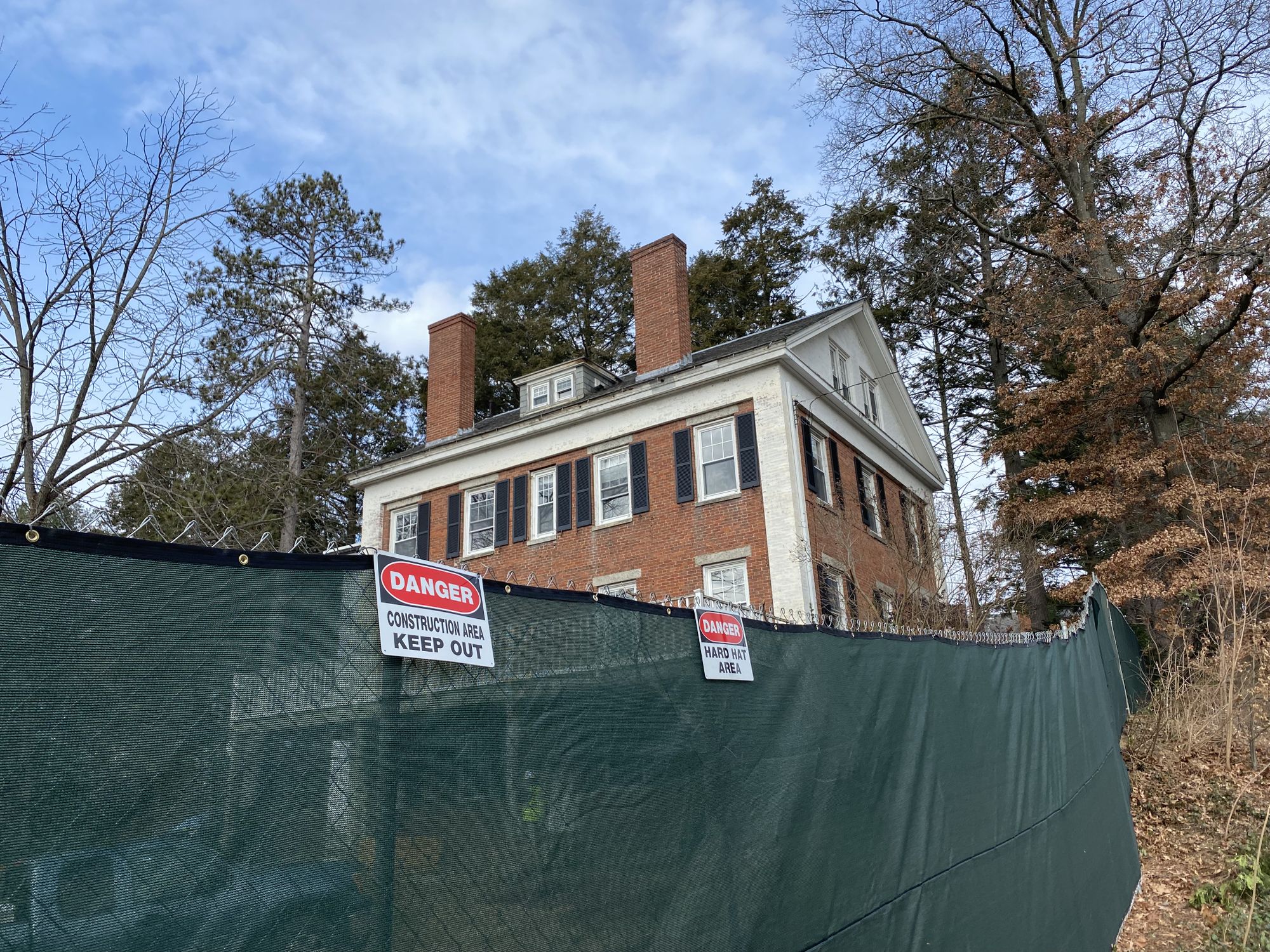The Lyceum Project Brings the Humanities Out of the Basement
Assistant Opinion Editor Dustin Copeland ’25 shares his excitement for the Lyceum Project, which has just broken ground on Amherst’s campus.


As disruptions go, the Lyceum Project’s beginning on Nov. 15 was not particularly annoying, or even very noticeable. Indeed, if I didn’t check the Daily Mammoth with abnormal frequency, I might not even have known that the month of site preparation had begun. But begun it has, in a campus development that is (perhaps surprisingly) unequivocally good.
The new development is happily being built to move the History department out of what is very probably the most atrociously designed building on campus: Chapin Hall. With its uninspired brickwork and Howard Johnson’s-esque cupola, Chapin is one of the least architecturally valuable buildings in the venerable legacy of McKim, Mead, & White. On the inside, too, the building is lackluster: with the exception of the gorgeous CHAP-108, with its ceiling-height bookshelves and wood-trimmed plush furniture, even the aboveground rooms in Chapin feel “basement-like.” With two classes in 201 myself, I can attest to this fact — ergonomic chairs are not conducive to an attractive learning environment.
Not only will the Lyceum Project provide a welcome new space for the History department, it will house the Center for Humanistic Inquiry which is currently squirreled away in Frost. A real front door for the CHI will go a long way towards making the organization more accessible and recognizable as its own entity. Moreover, providing community space for the CHI alongside the History department lends legitimacy to the college’s branding of the building as the “Lyceum” — an Ancient Greek public space for open lectures and learning.
This final point is most crucial about the new building. While it is inarguably good in conception, a failure in execution would defeat the stated purpose of the building and effectively ruin the entire project. A functional Lyceum would provide accessible and open spaces which are not only aesthetically pleasing, but also conducive to informal discourse, serving as a community meeting space as effectively as it conducts class. Ideally, this new building should be a place that students want to do work in.
Location is the first major part of that consideration. Almost directly across the street from Johnson Chapel, the new Lyceum is placed in a spot that is certainly out of the way of most students’ daily paths. Because classes will be held there, a population of students will have regular interactions with the space, but a significant portion will have a much harder time mentally justifying the trek on a regular basis, despite the beautiful walk. Nevertheless, the building will change traffic patterns for students daily, and isn’t so out of the way as to be unreachably distant — that is, if students love it. A repeat of Chapin’s architectural execution, for example, would all but guarantee an empty CHI.
Luckily for us (and unlike the far-off new student center), the Lyceum’s architects have publicly available design studies! Bruner/Cott is a Boston firm with a storied history for campus architecture, from the restoration of Harvard’s Memorial Hall Complex to Hampshire’s Kern Center. They’ve had history here, too: the Powerhouse renovation is their work. That building is one of the most promising signs for the upcoming Lyceum: The Powerhouse makes amazing aesthetic use of a previously utilitarian building and what are possibly the best larger-capacity bathrooms on campus. Indeed, if the new building lives up even to the standard the Powerhouse sets, it will be not only an effective solution to the architectural challenge poised, but a well-liked community space.
Perusing the design study only furthers this budding optimism: the Lyceum reuses a historic house already on the plot, preventing costly and emissions-heavy destruction to help the sustainable addition’s goal of contributing to the college’s goal of near-future carbon neutrality. The addition itself then represents a sustainable counterpoint to the Science Center, its wide-open windows and daylight-preserving strategy an elegant response to that building for the humanities at the college. A view of the front of Johnson Chapel through floor to ceiling windows in the enclosed common area abutting the Lyceum’s historic house, for example, sounds like a heavenly place to study. That view alone is enough for me to be excited about the Lyceum, a building that is much smaller in scale and is more aesthetically pleasing than its STEM counterpart. It settles into its environment naturally, its new glassy face playing collegiate-modern counterpoint to the traditional piece of our New England environment it abuts and is contextualized by. It manages to be exciting while preserving the surrounding neighborhood’s feel.
Assuming that the expected completion date isn’t too optimistic, I can’t wait to spend time studying, taking classes, and exploring around the updated CHI’s home over the hill.


Comments ()